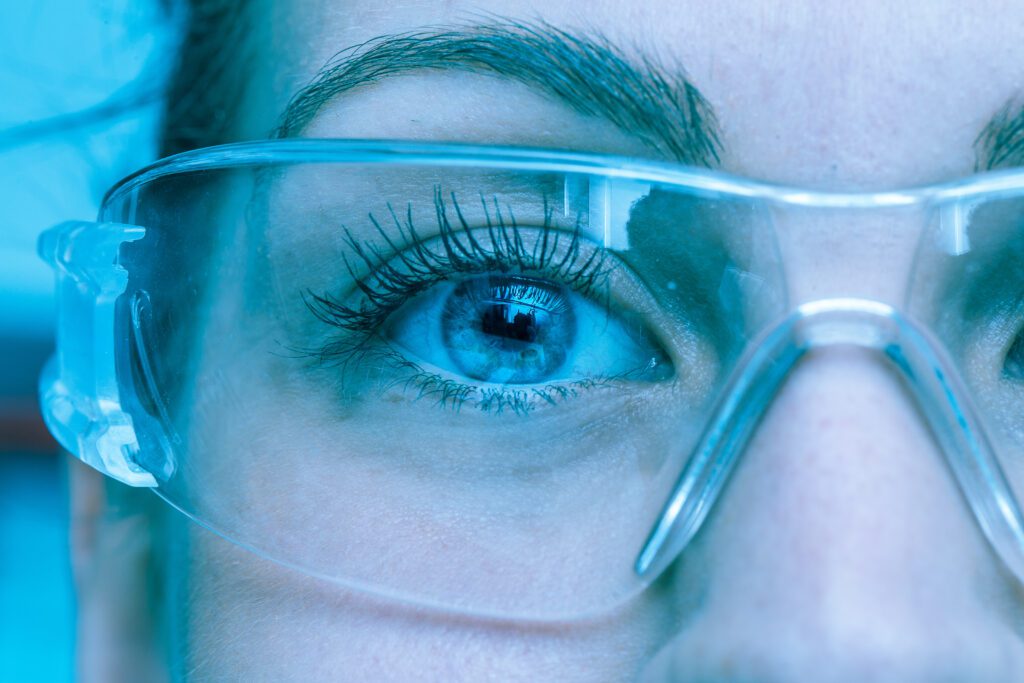
by TERRANCE HAFNER, O.D.
The eyes are one of the most important organs in our body, allowing us to see and experience the world around us. It is crucial to prioritize eye safety to prevent any potential injuries or long-term damage. In this article, we will explore various safety measures and practices that can help protect our eyes in different environments and situations.
1. Protective Eyewear:
Wearing appropriate protective eyewear is essential in certain work environments or activities where there is a risk of eye injuries. Safety goggles, face shields, or helmets with face shields should be worn when working with hazardous materials, chemicals, or machinery that might cause debris or particles to enter the eyes.
2. UV Protection:
Exposure to ultraviolet (UV) rays can lead to various eye conditions, including cataracts, macular degeneration, and even cancer. It is essential to wear sunglasses that block 100% of UV rays when spending time outdoors, especially during peak sunlight hours.
3. Proper Lighting:
Good lighting is crucial for maintaining healthy eyesight. Insufficient or excessive lighting can strain the eyes, leading to fatigue, headaches, and even vision problems. Ensure that the lighting in your workspace is adequate and properly positioned to avoid any unnecessary strain on your eyes.
4. Screen Time:
In today’s digital age, excessive screen time has become a common concern. Prolonged exposure to electronic devices such as computers, smartphones, and tablets can cause digital eye strain or computer vision syndrome. To minimize the risk, follow the 20-20-20 rule: every 20 minutes, take a 20-second break and look at something twenty feet away.
5. Eye Hygiene:
Maintaining good eye hygiene is essential to prevent infections and other eye-related problems. Avoid touching or rubbing your eyes with dirty hands, and always wash your hands before applying or removing contact lenses. Additionally, regularly clean your contact lenses as per the instructions provided by your eye care professional.
6. Eye Rest and Blinking:
When engaged in tasks that require prolonged focus, such as reading or using electronic devices, it is important to take regular breaks to rest your eyes. Blinking frequently helps to keep your eyes lubricated and prevents dryness and irritation.
7. Safety in Sports:
Sports-related eye injuries are common, especially in contact sports. Wearing appropriate protective eyewear designed for the specific sport can significantly reduce the risk of eye injuries. Whether it is goggles for swimming or helmets with face shields for hockey, make sure to prioritize eye safety while participating in sports activities.
8. Regular Eye Exams:
Regular eye exams are essential to monitor and maintain eye health. Eye exams can detect early signs of eye conditions such as glaucoma, macular degeneration, or cataracts. It is recommended to have a comprehensive eye exam at least once every two years, or more frequently as advised by your eye care professional.
In conclusion, your eyes are designed to last a lifetime, taking proper care of them and prioritizing eye safety is crucial for maintaining good vision and preventing any potential injuries or long-term damage. Call 800-282-3937 or visit us online at EYESFL.COM to schedule your next eye exam.
Bio: Dr. Terrance Hafner is a board-certified optometrist who sees patients at the Auburndale location for Eye Specialists of Mid-Florida. He specializes in primary care optometry, diabetic eye care, and contact lenses.
This column is sponsored by Eye Specialists of Mid-Florida, and the opinions expressed herein may not reflect those of CFHN or of its advertisers.
